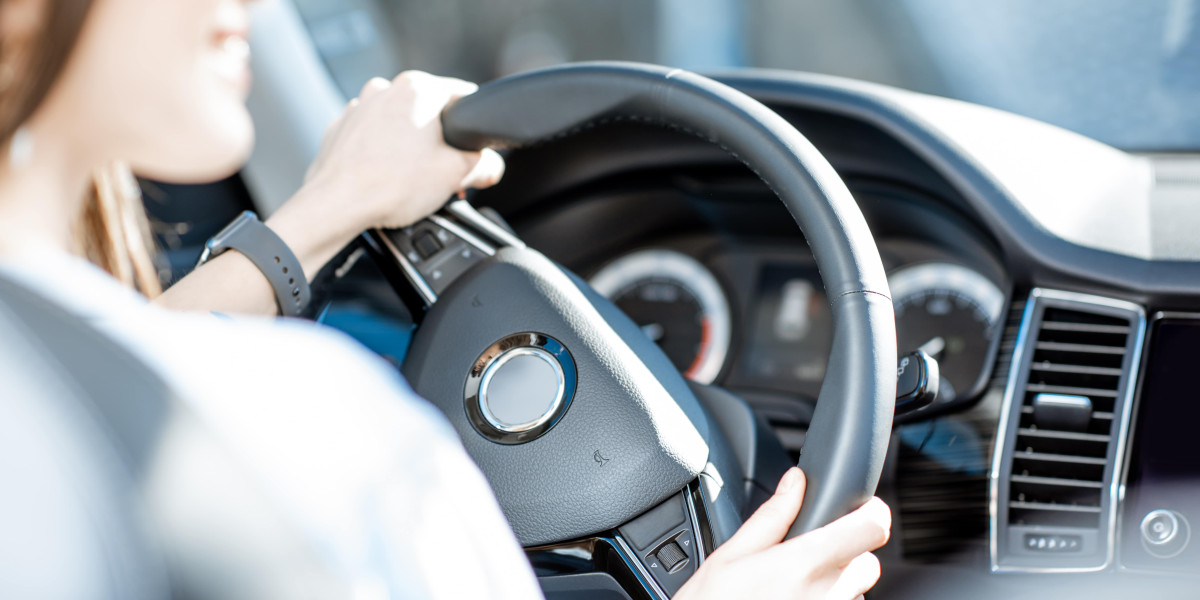
Keeping the Purrfect Passage Open: A Guide to Cat Door Maintenance
Cat doors, also called pet doors or cat flaps, are a great addition to any home with feline companions. They provide cats the freedom to explore the outdoors (or designated areas within the home) and ease themselves, all while giving owners peace of mind and reducing the number of impromptu door-opening requests. However, like any other feature of a home, custom cat flap installation doors are not immune to wear and tear. Regular maintenance is necessary to ensure they continue to operate correctly, stay safe and secure, and offer a comfy and safe passage for your precious cat. Disregarding maintenance can lead to a host of concerns, varying from a stiff and loud flap to a total breakdown, possibly locking your cat out or, worse, compromising your home's security.
This short article will look into the value of cat door maintenance, detailing the required actions to keep your pet's access point in prime condition. By understanding the basic maintenance required, you can extend the life-span of your cat door, ensure your cat's ongoing freedom, and prevent pricey repairs or replacements down the line.
Why Regular Cat Door Maintenance Matters
Keeping your cat door is more than just a cosmetic task; it's an investment in the performance, security, and durability of the feature, along with the comfort and wellness of your cat. Here are some crucial reasons why routine maintenance is vital:
- Ensures Smooth Operation: Dust, particles, and weather condition elements can collect around the hinges and flap of a cat door, causing it to end up being stiff, sticky, or noisy when opening and closing. Regular cleaning and lubrication prevent these concerns, guaranteeing the door operates efficiently and quietly, motivating your cat to use it without doubt.
- Extends the Lifespan of the Door: Like any mechanical component, cat doors undergo use and tear. Overlooking maintenance can accelerate this process, causing premature damage and the requirement for replacement. Routine cleaning, lubrication, and attending to small concerns without delay can substantially extend the life-span of your cat door, saving you cash in the long run.
- Maintains Security: A properly operating cat door should close securely after your cat passes through. Damaged or improperly preserved doors might not close entirely, potentially compromising your home's security by leaving gaps that could be exploited by trespassers or permit drafts and insects to go into. For electronic or microchip cat flap installer-operated doors, consistent maintenance ensures the locking mechanisms and sensors work dependably, maintaining controlled access.
- Avoids Drafts and Energy Loss: A badly preserved cat door can end up being a considerable source of drafts, particularly in chillier climates. Spaces around the flap or frame due to damage or debris can let cold air in and warm air out, increasing your energy expenses. Correct sealing and weather condition removing maintenance is necessary to maintain energy performance.
- Promotes Hygiene: cat flap fitter doors are exposed to the aspects and can build up dirt, mud, and even insect problems gradually. Routine cleansing helps preserve a sanitary passage for your cat and prevents the transfer of dirt and germs into your home.
- Reduces Noise: A disregarded cat door can end up being noisy, especially in windy conditions. Squeaking hinges or a rattling flap can be disruptive to both you and your cat. Lubrication and tightening up of loose elements can significantly lower noise levels.
- Early Detection of Problems: Routine maintenance enables you to check your cat door carefully and recognize any possible problems early on, such as cracks, loose screws, or malfunctioning elements. Resolving these minor problems without delay can prevent them from escalating into more considerable and costly repairs.
Kinds Of Cat Doors and Maintenance Considerations
While the fundamental maintenance concepts use throughout a lot of cat doors, various types might have specific requirements. Here's a quick introduction of common cat door types and maintenance considerations:
- Basic Flap Doors: These are the simplest and most common type. Maintenance mainly includes cleaning the flap and frame, lubricating hinges, and looking for damage to the flap material (plastic, rubber, or flexible polymer).
- Magnetic Cat Doors: These doors utilize a magnetic collar secret to permit entry just to felines wearing the key. Maintenance consists of the same tasks as fundamental flap doors, plus making sure the magnetic mechanism is tidy and without particles. Likewise, check the collar secret's magnet is still practical.
- Microchip Cat Doors: These doors use a microchip scanner to acknowledge your cat's implanted microchip, offering selective entry. Maintenance consists of cleaning, checking for damage, and periodically replacing batteries if it is battery-powered. The scanner lens ought to be kept tidy for dependable chip detection.
- Electronic Cat Doors: These doors may use infrared or radio frequency (RFID) innovation for selective entry, often with sophisticated features like curfew settings. Maintenance includes cleansing, examining for damage, battery replacement (if relevant), and occasionally recalibrating or reprogramming the electronic components according to the producer's instructions.
Necessary Cat Door Maintenance Tasks: A Step-by-Step Guide
Establishing a routine maintenance schedule will keep your cat door functioning efficiently. Here's a breakdown of common maintenance tasks:
1. Routine Cleaning (Weekly/Bi-weekly):
- Gather Supplies: You will need:
- Mild soap or cleaning agent
- Warm water
- Soft cloth or sponge
- Paper towels or a clean, dry fabric
- (Optional) Disinfectant wipes (pet-safe)
- Wipe Down the Flap: Use a moist cloth or sponge with soapy water to clean both sides of the flap. Remove any dirt, mud, fur, or insect residue.
- Tidy the Frame: Clean the entire frame of the cat door, both inside and out. Focus on corners and crevices where dirt can collect.
- Dry Thoroughly: Ensure all parts are totally dry to prevent mildew or rust.
- Sanitize (Optional): If desired, utilize pet-safe disinfectant wipes to sterilize the door and frame, particularly if you have numerous cats or wish to preserve additional hygiene.
2. Lubrication (Monthly/As Needed):
- Identify Hinges and Moving Parts: Locate the hinges, rotates, or any other moving parts of the cat door system.
- Apply Lubricant: Use a silicone-based lubricant spray or a dry lubricant (like graphite powder) specifically designed for hinges and moving parts. Prevent oil-based lubes, as they can attract dust and end up being sticky gradually. Apply sparingly to prevent drips.
- Work the Door: Open and close the cat door flap numerous times to distribute the lubricant evenly and make sure smooth, quiet operation. Wipe away any excess lube.
3. Inspection and Repair (Monthly/Seasonally):
- Check for Damage: Carefully check the flap for cracks, tears, or warping. Look for damage to the frame, weather removing, or any locking systems.
- Tighten Loose Screws: Check all screws securing the door frame to the door or wall and tighten any that are loose. Loose screws can cause instability and drafts.
- Examine Weather Stripping: Examine the weather condition stripping around the flap and frame for damage, cracks, or spaces. Replace damaged weather stripping to maintain an excellent seal and prevent drafts.
- Battery Check (Electronic/Microchip Doors): If your door is battery-operated, inspect the battery level regularly and replace batteries according to the producer's recommendations. Low batteries can cause malfunctions and undependable operation.
- Sensor Cleaning (Microchip/Electronic Doors): Gently tidy the sensor lens with a soft, dry cloth to ensure accurate chip or crucial detection.
4. Seasonal Maintenance:
- Winter:
- Check for ice accumulation around the flap and frame. Carefully eliminate ice to prevent damage and ensure smooth operation.
- Guarantee weather condition stripping is in excellent condition to avoid drafts and cold air entry.
- Summer season:
- Check for insect nests or invasions around the cat door. Clean away any nests and think about utilizing pet-safe insect repellent around the door frame.
- Ensure appropriate ventilation around the door opening to avoid humidity buildup and potential mildew growth.
Tools and Supplies for Cat Door Maintenance
Keeping a small set of maintenance tools and materials useful will make regular maintenance simpler and more effective. Consider assembling the following:

- Soft cloths and sponges
- Moderate soap or detergent
- Silicone lube spray or dry lubricant
- Screwdriver (Phillips and flathead)
- Pet-safe disinfectant wipes (optional)
- Replacement weather stripping (if required)
- Small brush for cleaning up crevices
- Paper towels
- Replacement batteries (if suitable)
DIY vs. Professional Help
Many routine cat door maintenance jobs are uncomplicated and can be easily dealt with by property owners. However, there are circumstances where looking for professional aid might be a good idea:
- Significant Damage: If you find extensive damage to the door frame, flap, or locking mechanisms, professional repair or replacement might be essential.
- Electronic Malfunctions: Troubleshooting electronic or microchip door malfunctions can be intricate. If you are uncertain how to diagnose or repair electronic concerns, speak with a professional installer or a qualified technician.
- Installation Issues: If you are experiencing persistent issues after setting up a brand-new cat door, it may be due to installation mistakes. A professional installer can evaluate the situation and rectify any problems.
Routine cat door maintenance is a simple yet crucial element of accountable pet ownership for those who pick to offer their feline good friends with this flexibility. By dedicating a little amount of time to cleaning, lubricating, and checking your cat door, you can guarantee its ongoing smooth operation, longevity, security, and hygiene. A properly maintained cat door offers your local cat flap installers with consistent access to the outdoors world (or designated indoor locations), adding to their joy and well-being, while also offering assurance for you. Taking proactive actions to look after your energy-efficient cat flap installation door will keep the purrfect passage open for many years to come.
Frequently Asked Questions about Cat Door Maintenance
Q: How frequently should I clean my cat door?
A: Aim to clean your cat door weekly or bi-weekly for standard flap doors. For electronic or microchip doors that might accumulate more dirt around the sensing unit locations, weekly cleaning is suggested.
Q: What type of lube should I use on my cat door hinges?
A: Silicone-based lubricant spray or dry lube (like graphite powder) is recommended. Avoid oil-based lubricants as they can draw in dust and become sticky.
Q: How do I clean up a microchip cat door sensing unit?
A: Use a soft, dry cloth to gently wipe the sensor lens. Avoid utilizing liquids or abrasive cleaners, as they might harm the sensing unit.
Q: My cat door flap is sticking. What should I do?
A: First, tidy the flap and frame thoroughly. Then, apply a little amount of lube to the hinges and moving parts. If the sticking continues, look for any damage to the flap or frame and consider tightening screws or adjusting the door positioning.
Q: How do I understand when to replace the batteries in my electronic cat door?
A: Electronic cat doors typically have a low battery indication light or warning signal. Describe your door's manual for particular directions on battery replacement. It's a great practice to change batteries proactively, possibly every 6-12 months depending upon use and battery type.
Q: Can I utilize home cleaners to clean my cat door?
A: Yes, you can use moderate soap or detergent watered down in warm water. Avoid severe chemicals or abrasive cleaners that could damage the door material. Guarantee any cleansing products are pet-safe.
Q: My cat door fitting door is allowing drafts. How can I repair this?
A: Inspect the weather condition removing around the flap and frame. Change any damaged or worn weather condition stripping. Make sure the door frame is firmly installed and tighten any loose screws. You can likewise think about adding additional weather condition stripping or a draft excluder specifically created for pet doors.

